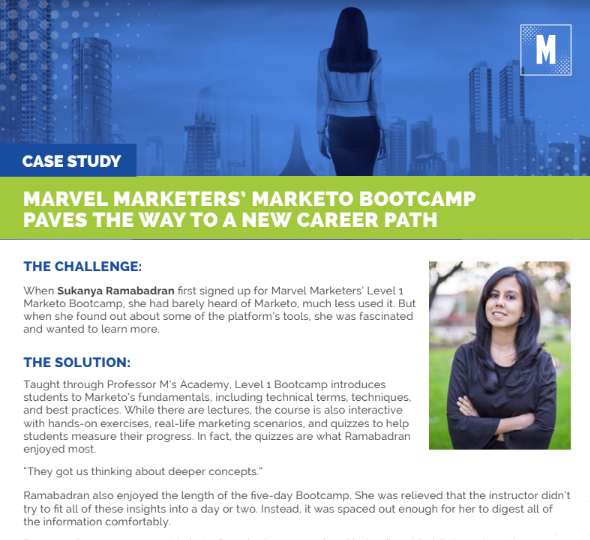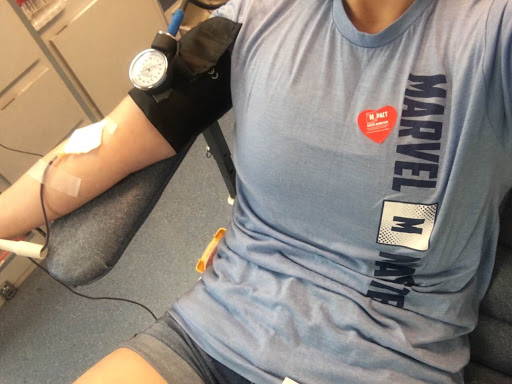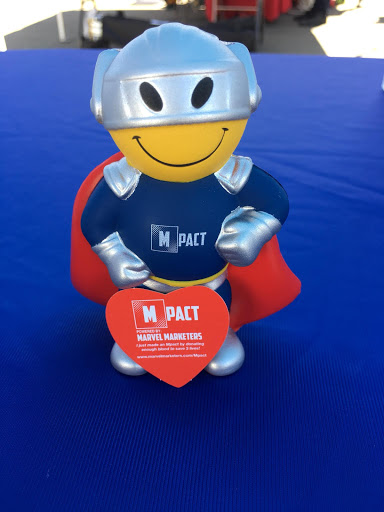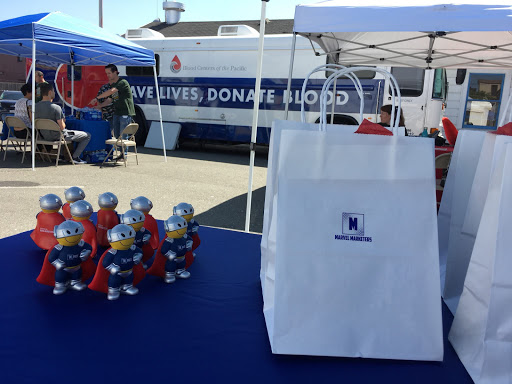Some of the most powerful content comes from your customers themselves. Testimonials are great, but why rely solely on a short testimonial when you can also write a case study that digs deeper into the details and shows a more powerful impact?
Right now, you’re probably asking “How do I create a compelling case study?”
Take the project in question and break it into three chunks: the problem you faced when the customer first came to you, the solution you created, and the impact your solution created in the end.
The impact is key. In order to be compelling, your case studies need to be reserved for projects that truly made a difference.
If you try to write a case study based off of every ol’ project, it will come out looking like you tried to over-dramatize the situation—and no one takes those case studies seriously. Instead, set a high bar for what your organization deems case study-worthy and stick to it.
For example, we recently wrote a case study about one of our Marketo Bootcamp students who used the information she learned to shift her career towards marketing automation. She had barely heard of Marketo before signing up for Bootcamp, but by the time all was said and done, she led demand generation for a company that was acquired by Dropbox and was promoted to be Dropbox’s Senior Enterprise Marketing Manager. The case study ends with a quote from her that says, “Marvel Marketers jumpstarted my career.”
Now that’s what we mean by making a difference!

Another powerful case study ingredient is data!
The vast majority of successful case studies are data-driven stories that chronicle the experience your customer had working with you. The key here is data-driven. The case study we discussed above doesn’t include any hard numbers, but it contains powerful validation—she got a job based off of what she learned.
While stories like this are great, the most common validation you can use in a case study is data. Leave the qualitative details to your testimonials. There, it makes perfect sense for a customer to call you “brilliant”, “so wonderful”, or “a joy to work with.” But in a case study, numbers rule.
For example, the case study for our Content Services team’s work with one of our Fortune 25 clients is chock full of numbers—in bold font—and it wouldn’t be nearly as powerful without them. It’s one thing to say you helped a client generate more engagement, but it’s another thing to validate that claim by saying that you generated a 10% higher open rate and a 4% higher click-to-open rate within two quarters.

Now that you’ve got a superhero strategy, go create case studies that your prospects will drool over!




